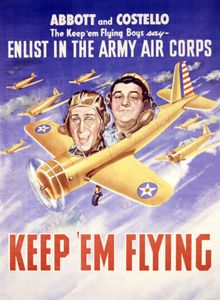
By George Benson
This is a 25-inch span, rubber-powered model from a well worn Hurst Bower plan sent by a "pen pal" from Australia. On paper, it should be a good flyer: slim body, no struts, minimal landing gear, stabilizer on top of the body for easy D.T. hinging, good wing area, and easy wing attachment by rubber bands onto dowels. I like unusual planes which are little modeled, so set to and built it.
 The pilot is experienced, having been mounted on other models, now scrapped. The dummy foam engine was from a Flying Flea I had built and scrapped long ago.
The pilot is experienced, having been mounted on other models, now scrapped. The dummy foam engine was from a Flying Flea I had built and scrapped long ago. Wheels are of blue foam with aluminum tube spindles; the pilot's headrest also blue foam. Covering is silver tissue (Esaki?) and red, as the plan indicates red and silver on the original plane.
I had some trouble building the wing to my satisfaction, as in my desire for light weight plus the depth of the ribs (slightly over 5/8" at the root rib and just over 1/2" at the tip rib). I tried cracked rib construction, abandoned that approach, made conventional ribs with lightening holes which were too fragile, and reverted to conventional ribs of light 1/20" wood.
 Initially, I had made aluminum templates of the root and tip rib, stacked the wood between and shaped them, but the result was not satisfactory due to the pronounced angle (top and bottom) as I sanded them.
Initially, I had made aluminum templates of the root and tip rib, stacked the wood between and shaped them, but the result was not satisfactory due to the pronounced angle (top and bottom) as I sanded them.At this point I thought through . . . again . . . how to best shape the ribs of six sizes and approached it the following way:
1. From the plan, make a photocopy of the rib profile shown, usually the root rib. Then tint it with black felt tip pen to show up well in subsequent photocopying procedure.
2. Carefully measure the length of each rib, off the plan. Write the lengths down, measuring in millimeters as it facilitates the next step.
3. Proportion each rib size, a simple step using a calculator. For example, assume the root rib is 114 mm (about 4-1/2") and the next rib is 109 mm (about 4-5/16"). Divide the second rib length by the root rib length -- i.e. 109/114 = 0.956 which is 95% of the length of the big root rib.
4. With a photocopier capable of enlarging and shrinking, set it to 95%, put in your photocopy of the root rib, print it at this 95% ratio and there you are with rib #2 profile.
5. Repeat for each rib after measuring the length on the plan.
6. Take two stacked pieces of balsa, attach the paper template with glue stick, hold the two rib blanks together with pins, cut around with a sharp blade, notch for the spars with a small rat tail file, and do likewise for each size rib.

Testing so far is a little troublesome. I started with a 4 bladed wood prop, but then changed to an 8" plastic as I felt it is better to use a proven prop and tinker later with a more scale prop. The thrust line is high, and the rubber fouls the top former and support for the pilot, so I may try a new nose block with a little lower bearing position, to lower the rubber and also to try to overcome another difficulty -- that the angle of the rear rubber peg tends to pull the prop shaft hook downwards, giving upthrust.
To minimize this I added a "wedge" at the bottom rear of the nose block, to "hook" over the front former bottom (a little inconvenient when inserting the nose block but it does improve the situation). By the way, I do realize the lowered thrust line is "non scale," but as I fly for fun, not a contester, that is immaterial to me!! Power so far is 2 loops x 17" of 3/16" rubber. Power was low after some tests but this was traced to a loose plug lead on the foam dummy motor!!!
The original full size plane was constructed by a Belgian company, Poncelet, (probably a family name and a manufacturer of wooden full size propellers) to enter in the British light plane contest in 1923 at Lympne. I have not found any photos of the plane and the registration letters on the plan seem to be incorrect, being a British registration allocated to a Tiger Moth. I guesstimated registration letters for that period, but am unsure whether the early Belgium national registration was O or OO. A small point to me, not being competitive and enjoying building and the pleasure derived from the flying field with friends, a calm, warm day and the sun shining through the tissue as a model floats aloft.










No comments:
Post a Comment